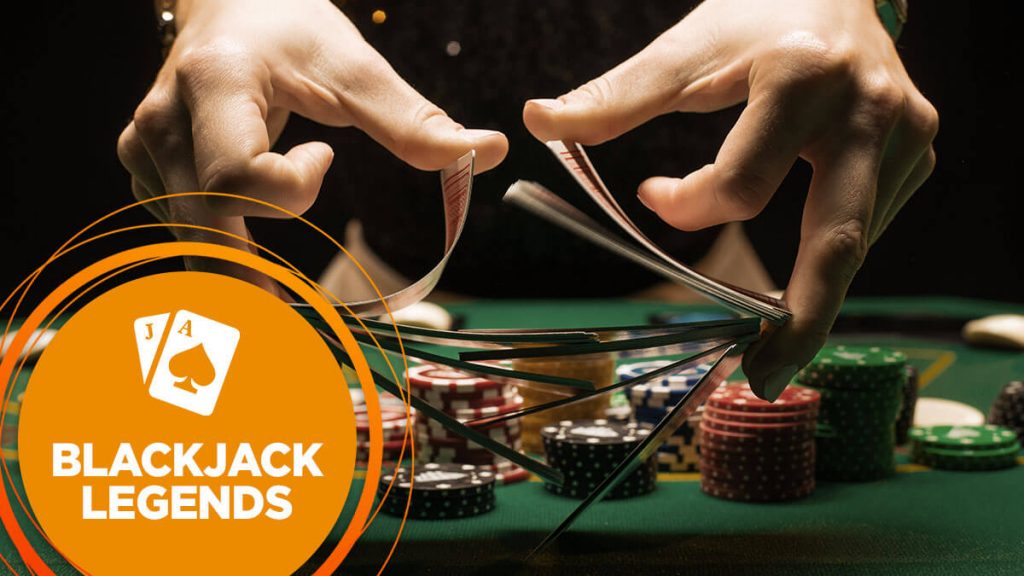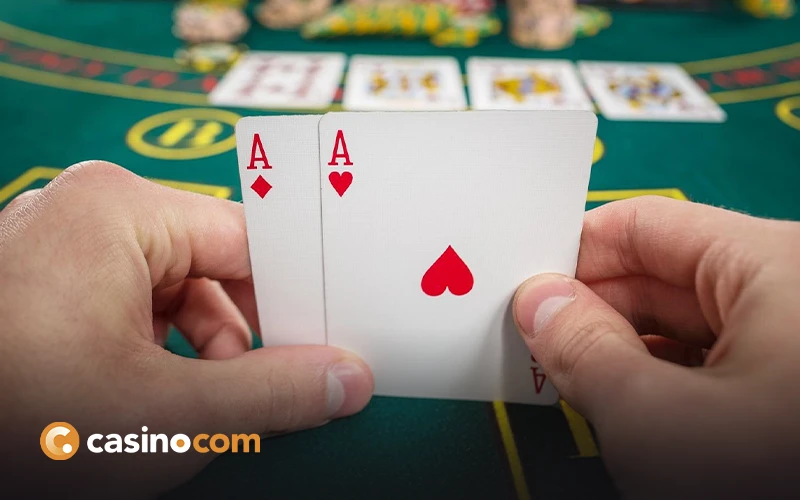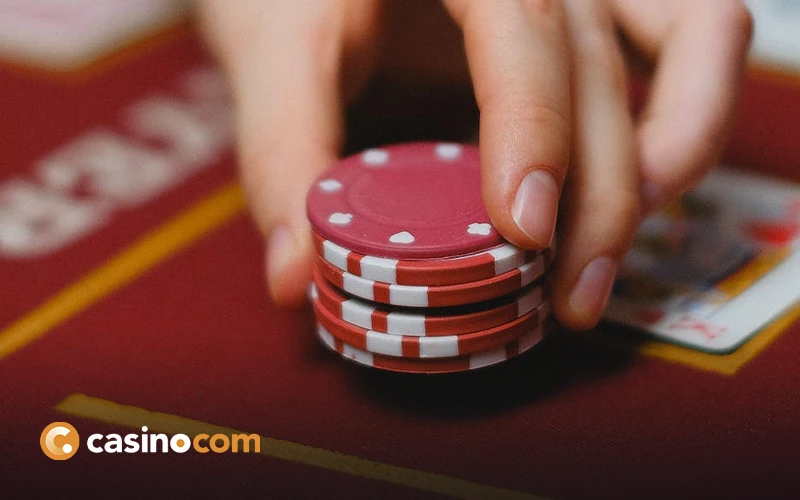Blackjack is one of the simplest table games you’ll find in a casino. The origins of “21” may still be something of a mystery, but there’s no doubt that the game owes much of its popularity and modern-day relevance to a string of blackjack legends who, over the years, have truly pioneered it.
We spoke to Michael Kaplan, a journalist who has interviewed many of the most famous people on the gambling scene, including some who are included here. You can read his thoughts on how these people pioneered blackjack and how their legacies live on in the modern game.
Edward O. Thorp
Edward Oakley Thorp is one of the most famous mathematicians in the US, as well as the ground-breaking analyst of blackjack. Thorp has dedicated much of his life to mathematics and the application of ‘probability theory’ to all sorts of industries, including the casino and financial investment sectors.
Kaplan recalls meeting Thorp:
“I’ve met Edward Thorp and I’ve interviewed him. Thorp is incredibly interesting. The guy was a math professor who had access to big computer technology and became interested in blackjack as a theoretical problem. He wanted to work out how to beat the game. He knew basic strategy and became convinced that there was a mathematical model for yielding profits from blackjack.
“He spent a year laboring over computer calculations and worked out that if you bet higher when the deck is rich in 10-value cards and Aces, you’re playing at an advantage. It almost seems obvious when you think about it: of course those cards will give winning hands to players. And they also give winning hands to the house. But the great thing is that those 10-value cards make the house more likely to bust with 12 through 16.
Thorp said something interesting to me. He said he came up with this system and he presented it at a 1961 math conference. He was teaching at MIT and felt proud to announce, ‘Yeah, I figured out how to beat blackjack.’ But casino executives heard this and replied, ‘It’s not possible, there’s no way this game can be beaten.’ Some news reporters even described Thorp’s findings as a scam. Until then, he had no intention of going into the field and proving out his findings. But, in light of the backlash, he had to stand up for what he claimed.”
Thorp did it. He hit the casinos and made serious bank. “But,” continues Kaplan, “Thorp said he didn’t enjoy grinding it out in the casinos. So he wrote a best-selling book about blackjack, Beat The Dealer, which outlines his card-counting system. At that point, he lost all interest in actually playing the game. Instead, he turned to the world’s largest casino – Wall Street – and devised a system for evaluating probabilities related to what happens in the marketplace. Essentially, he turned the stock market into a blackjack game and reportedly made 20-25% a year.”
Aside from blackjack, Thorp also used his probability theory to find new ways of improving endgame positions in backgammon. This would soon become known as the ‘Thorp count’ within the backgammon community. His notoriety as a blackjack pioneer saw him inaugurated as the first inductee into the Blackjack Hall of Fame.
Roger Baldwin
Roger Baldwin is one-quarter of the “Four Horsemen of Aberdeen”. Baldwin graduated from Columbia University with a master’s degree in mathematics. During his time as a private in the US Army, Baldwin explored the maths behind the game of 21. He played with his fellow troops at the barracks of the Aberdeen Proving Ground in Maryland.
Kaplan talks about how Baldwin came up with what is now known as basic blackjack strategy:
“While in the army, Roger Baldwin became curious about blackjack. Back then, it was a randomly played game – nobody really thought that there was any sort of strategy that could be applied to it. The soldiers would fool around with it to kill time.
“Baldwin heard the rules — that the dealer must stand on 17 and draw on 16 or less – and he wondered if he could calculate an optimal way for the player to play the game.
“He sat down with pad and paper and began figuring things out. Then he recruited these other three guys to work with him. Using primitive calculators, they developed what went on to be called basic strategy.”
The Legacy Lives On
Sadly, Baldwin passed away in 2021 at the age of 91. As the last surviving member of the Four Horsemen of Aberdeen, Baldwin has left behind a legacy and will always be renowned as one of the true innovators of the game.
Wilbert Cantey
Wilbert Cantey is the second of the so-called “Four Horsemen of Aberdeen” who helped pioneer a new way of playing blackjack in the 1950s. Cantey initially sought a career as a priest. However, his penchant for card playing and pool hustling resulted in him being asked to leave the seminary midway through his training. Following this, Cantey was a sergeant at the Aberdeen Proving Ground in Maryland.
When Two Great Minds Meet
Like Baldwin, he too studied for a master’s degree in mathematics. And he shared Baldwin’s fascination with the game. Although Cantey and the rest of the Four Horsemen were happy to remain largely in the background, they rapidly gained notoriety within the blackjack community. A now-famous quote from Johnny Chang about Cantey and the Four Horsemen says that he “couldn’t fathom how they had accomplished [their research] using desk calculators”.
To honour his legacy, Cantey was inducted into the Blackjack Hall of Fame in 2008.
Herbert Maisel
Herbert Maisel was a private in the US Army who would eventually go on to become a professor at Georgetown University. Like Cantey, Maisel was inducted into the Blackjack Hall of Fame in 2008. He was the third of the “Four Horsemen”, helping Cantey and Baldwin to dig deeper into the game theory of blackjack. Maisel, who would later go on to teach computer science, used pen and paper to help look at new ways of playing the game of 21.
Among The First Calculators
The Four Horsemen also had the benefit of Maisel’s “adding machines”, devices that we now know as calculators, to help look at probability calculations. Although Maisel and the rest of the Four Horsemen sought a positive-expectation strategy for blackjack, it’s fair to say that chance still has a huge say on the outcome of any blackjack game today.
James McDermott
James McDermott was also a private in the US Army and served alongside Maisel, Baldwin and Cantey. The quartet discovered that both Maisel and McDermott had master’s degrees in mathematics, and they soon worked with Baldwin to dig deeper into the ins and outs of blackjack strategy. McDermott was able to get his hands on the Army’s most basic calculators and utilise his expert mathematical skills to get to grips with a methodical approach to playing 21.
New Insights
As part of his research, McDermott discovered that players who split eights were statistically less likely to lose money than those who play their pair of eights as a hand worth 16. That golden nugget of information helped characterise the Four Horsemen as undisputed pioneers of blackjack, as Kaplan explains:
“Some of what the Four Horsemen came up with is obvious, and some of it is not so obvious, like the idea that if you have two 8s, you should always split. I’ve seen people refuse to split 8s against a 10. It’s the mathematically sound play, but a little scary and not so obvious. And the idea of hitting against a 12 with a 2 or 3 is basic strategy, and that’s not obvious either.
“They came up with a lot of really interesting theories that are mathematically correct, but you were still playing the game at a 2% disadvantage with basic strategy – nobody knew this until later. Without basic strategy, you’re playing at an unlimited disadvantage, because who knows what you’re going to do? So they figured out a way to at least make the game manageable, and that was the first time that someone had applied mathematics to blackjack. So it was a huge, huge breakthrough.”
After concluding his service in the US Army, McDermott would go on to work as an executive for IBM.
Peter A. Griffin
Peter A. Griffin became an expert on blackjack during the 1970s. He first discovered the game of 21 in 1970, after attempting to lead a course on the mathematics involved in gambling games. Griffin, who was born in New Jersey, made the pilgrimage to Las Vegas to see how things were done in the glittering city notorious for casino culture. He then compared processes there with those employed for blackjack games spread in Atlantic City, back in his native state.
Following extensive data analysis, Griffin was the first mathematician to conclude that the “average” blackjack player faces a disadvantage of 2% against the house – when deploying basic strategy. This house edge remains today, despite the attempts of blackjack experts to try and steal a march on the game’s rules. Griffin’s book, titled The Theory of Blackjack, is still considered a classic today, despite being over 40 years old.
“Peter Griffin was like the genius guy,” says Kaplan. “He was another academic, a math professor, and he was the one who figured out that you’re playing at a 2% disadvantage with standard play. He also figured out what your odds are with certain hands and in certain situations; a lot of things that would be tricky to do at a table but prove where you’re at in certain situations. Griffin also figured out edges to be found in rebate plays, or discounts as they are sometimes called. That was a lot of what Don Johnson, who I also spent some time with, did in Atlantic City and beyond.”
Passing The Torch
In his later life, Griffin taught statistics, calculus and differential equations at the California State University in Sacramento between 1965 and his passing in October 1998.
Lawrence Revere
The late Lawrence Revere is the last, but by no means least, of the seven blackjack legends listed on this page. Revere, who passed away in April 1977, was not only an author and the pit boss of a casino floor, but also a professional blackjack player in his time. Revere graduated from the University of Nebraska with a degree in mathematics and took a significant interest in blackjack game theory.
He penned a book titled Playing Blackjack as a Business, which proved to be an eye-opening account of an individual with knowledge of both sides of the casino industry. Having worked as a pit boss and spent many years as a customer at the tables, Revere was well-placed to offer advice on how to approach in-game blackjack scenarios.
Branching Out with Braun
Within his book, Revere partnered with fellow statistician Julian Braun to devise new playing concepts for the game of 21. An employee of IBM, Braun had extensive expertise in data simulation, which helped Revere to test a host of blackjack theories and bring them to light. Braun’s high-speed computer was able to crunch through a whopping nine billion hands of blackjack, which underpin the book’s theories.

Previous: Biggest Winners
Next: 21 + 3 Side Bet





